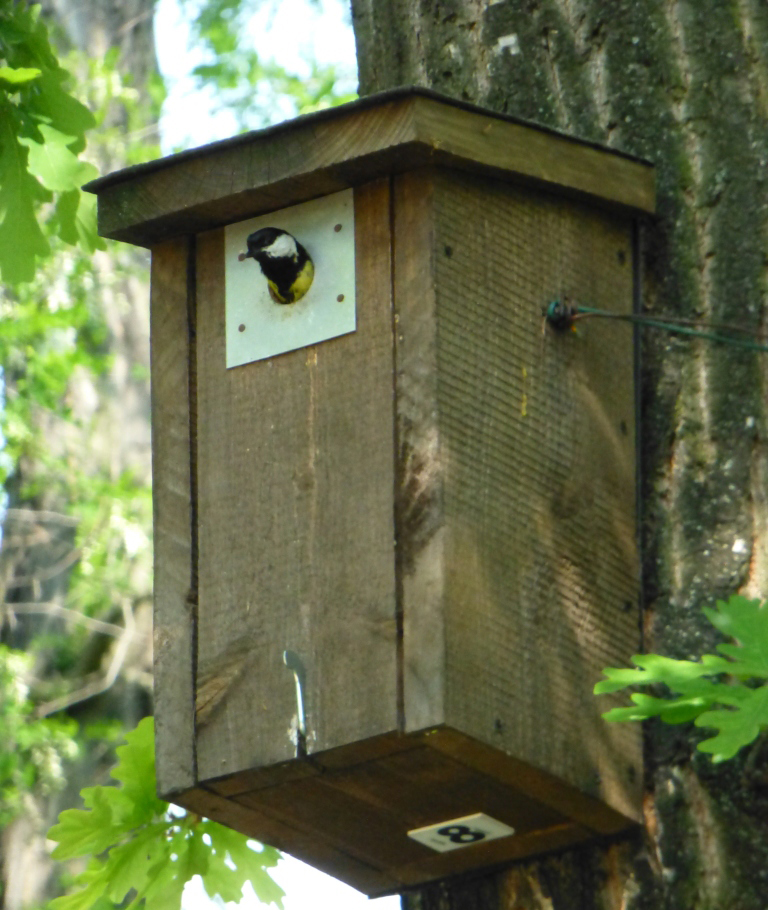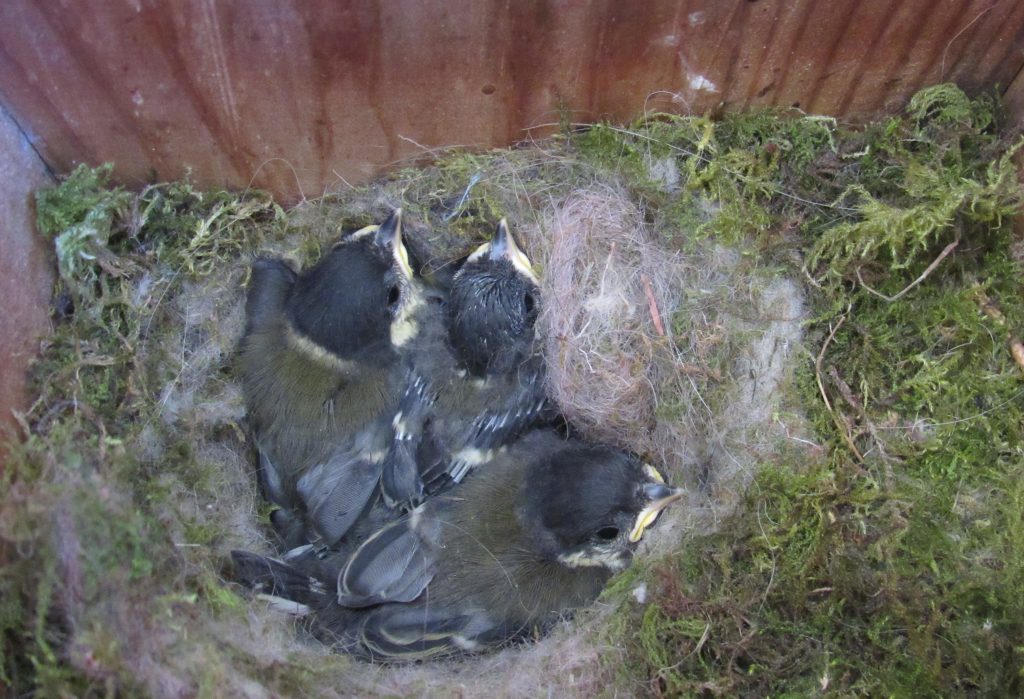Understanding an Ecological Trap
October 13, 2017By Anita Tendler, Cornell Class of 2019
Have you ever chosen a hotel because it got great reviews on Yelp, only to find that the room was terrible and the service was worse? You probably felt tricked out of your hard-earned money. You, my friend, were the victim of misleading information. But, did you know that birds, and other animals, also have to rely on cues and information gleaned from the environment before making important decisions about where to spend their time? They don’t simply choose a place to nest arbitrarily…they rely on signals from the environment, such as cavity size, food availability, and abundance of predators nearby.
Though it may seem like birds should be skilled at reading the landscape they depend upon, the cues in a human-modified environment can be deceptive. In a natural habitat, cues are usually positively associated with the quality of the habitat. But, in a human-modified habitat, such as urban areas, indicators of habitat quality can become misleading (e.g., a bird feeder provides ample food, but nonnative vegetation reduces insect availability). When the habitat is giving off good vibes, but there is some underlying reason why birds won’t succeed there, we call this an “ecological trap.” If an ecological trap is pervasive enough that it causes a negative population growth rate, ecologists refer to this area as an attractive sink. The opposite of a sink population is a source population, or one in which the population is productive, and stable or growing. Everyone wants their property, whatever its size, to be a source habitat, but the truth is that it’s very hard to tell, and even harder to prove experimentally.

Great Tit In Its Nest Box
When it comes to choosing a place to nest, attractive nest boxes may override environmental cues and mislead birds about habitat quality.
Bigger Isn’t Always Better
In a recent study from the UK, researchers were able to experimentally show a preference by Great Tits (Parus major) for a nest box design that was not in their best interest. As we know, nest boxes have numerous designs, accommodating different species depending on size and shape of the box and its entrance hole. Historically, a larger natural cavity would have been found only in a larger tree with a big canopy, and thus the number of arthropods available for feeding the future nestlings would have been high. However, a presumably attractive, larger nest box may have led birds in the UK study to breed in a subpar environment.
When Great Tits were given a choice among three progressively larger nest boxes, they actively occupied the largest size, regardless of other visual cues within the surrounding environment. In this species, larger cavities are linked to larger clutches, suggesting that the birds are being stimulated to increase their clutch size in anticipation of a rich supply of insects. In urbanized environments, naturally insect-rich vegetation is often replaced with its decorative, exotic counterparts that cannot support caterpillars or other insects that birds commonly use to feed their nestlings. Because the birds were attracted to a misleading cue in the environment (i.e., larger nest box size), and then laid more eggs in them than the habitat could support, they were subject to an ecological trap.
Avoiding The Trap
So how can responsible nest box landlords avoid the ecological trap phenomenon? Examples of potential ecological traps include:
- Using inadequate nest boxes.
- Not using predator guards in areas where predators are concentrated (e.g., outdoor cats in your neighborhood).
- Letting your grass grow long enough to attract ground-nesting birds, and then mowing it mid-nesting season.
- Spraying insecticides in your yard, thus eliminating the food base for birds and potentially poisoning nestlings and adults.

Great Tit Nestlings Await Their Next Meal
These Great Tit nestlings depend upon their parents to bring them insects.
Your Data Hold the Answers
As mentioned, it’s very hard to tell if your property or nest box trail is acting as an ecological sink, but here is a quick informal way to think about it. If you are a NestWatcher, download your “species summaries” report from NestWatch.org, leaving “year” blank to retrieve all years. Look at the “nesting success rate” column and scan through your list of species. Are there any species for which the nesting success rate is particularly low? If so, download the “breeding data” spreadsheet for the year(s) in question and review it. Was there one bad-luck event that is driving your low success rate, or do most nests seem to have less than a 50/50 chance of survival? Is there anything you can do to improve the situation (e.g., add predator guards; avoid feeding birds if it is attracting predators such as raccoons or House Sparrows; change nest box design to avoid temperature fluctuations; etc.)? Demonstrating an ecological trap is data-intensive and complex (even for professional scientists), but exploring your NestWatch data to find any potential problems is a great first step.
References:
- Demeyrier, V., M. M. Lambrechts, P. Perret, and A. Grégoire. 2016. Experimental demonstration of an ecological trap for a wild bird in a human-transformed environment. Animal Behaviour 118: 181-90. DOI: 10.1016/j.anbehav.2016.06.007

13 comments on “Understanding an Ecological Trap”
what is a predator guard? we have cats in our neighborhood and they visit my yard regularly. Don’t seem to disturb the feeders but I worry about it:(
Hi Kathy,
A predator guard is any kind of baffle or device used to keep predators (like cats) from climbing up free-standing nest box poles and consuming nest contents. Many of them look like the kind of baffle that you would use to keep squirrels out of a bird feeder. If your box is mounted on a pole, there are several styles you can attach to the pole. If it is mounted on a building, you can use something like the wooden block hole extender to make the entrance hole a bit deeper, thereby making it harder for predators to reach in through the entrance hole. To learn more, check out our page here: https://nestwatch.org/learn/all-about-birdhouses/dealing-with-predators/
Best,
Robyn
Dear Nest Watch,
We have had several years of first clutch success from our Western Bluebird box. However, our second clutch is not successful. We believe this is due to sudden temperature hikes in early summer baking the nestlings and dehydrating them. Will you please send us ideas to fix the bluebird box in order to keep it cooler for second clutch heat waves. Or should we just block the nest hole so they cannot attempt a second clutch?
Hi,
Is the box in full sun? Is there a shadier place where you can relocate it? That would be a good place to start.
Where are you located? What temps do you get?
Dear NestWatch,
I live in the middle of town, and was thinking about mounting a screech owl box on our garage beside a pine tree and our brush pile. would this be a good spot or should I mount it somewhere else?
Hi William,
I would mount a screech-owl box on a tree rather than on a building. Face it towards an open area, but ideally not towards a busy section of the yard/house (i.e., not facing a front door or driveway). The brush pile is great to have nearby. Screech-owls do well in suburban-urban areas, so hopefully you will attract one. Be vigilant about starlings though, or they might take over the box.
Best of luck,
Robyn
Would it be good to stop feeding my birds in the summer so as to keep the House Sparrow and Starling population down?
Sorry should explain that I want to keep the Sparrow and Starlings down so I can put up Bluebird Houses….
Hi Julie,
Feeding birds in the summer is a personal preference, but if you are getting significant numbers of House Sparrows and European Starlings, it may be a good idea to take down your seed feeders (though you can still keep hummingbird and oriole feeders out). That being said, bluebirds are nesting in much of the country already – boxes should normally be put up in early spring, sometimes even February, depending on your location. Because House Sparrows and European Starlings are invasive species, you are allowed to remove any nests and eggs of these species from your nest boxes if they do start to build nests. For more information on managing invasive species, please visit this page: https://nestwatch.org/learn/all-about-birdhouses/managing-house-sparrows-and-european-starlings/
-Holly Faulkner, Project Assistant
Dear Nestwatch,
I recently put up a bluebird (Eastern) box in a pole in the back of my yard. I live iMontgomery County, MD I had thought that one should put it up in advance so it would be noticed by the birds and the “human scent” wpuld disappear. .
To my surprise, within a week after I put it up there were a pair of bluebirds hopping in and out of it. I am not sure they have stayed or not.
I don’ know if they are planning ahead for the Spring or not.., or if they would be able to nest over the winter in our climate. I would love your thoughts. Thanks,
Is there a benefit to adding predator guards to a natural nesting site? I’m a bit worried about the robin’s nest in a low bush in my backyard. I have a dog, plus we get foxes, outdoor cats, and raccoons out there at night.
Hi Kelly, There’s unfortunately little that we can do as monitors to help protect cup-nests. The best thing you can do is try to give it plenty of space (i.e. so as not to draw too much attention to the nest) and to keep pets away from the nest as well. If you’re monitoring it, be sure to leave the nest via a different pathway than the one you took to the nest, to avoid leaving a dead-end trail for predators. Many bird nests survive in low places like this, and there are several species that nest exclusively on the ground, but it’s also good to keep in mind that it’s natural for some nests to fail as well. Best of luck!